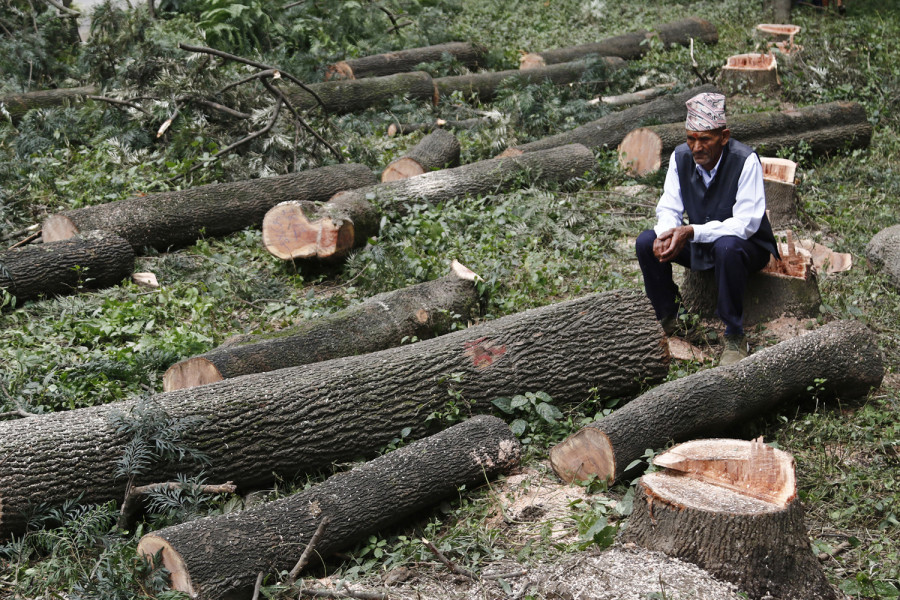Climate & Environment
Project developers need to plant in areas with limited forest cover while compensating felling of trees for projects
All kinds of developers need to plant 10 saplings trees against cutting down of a tree at project sites as government strives to extend forest cover at local levels with zero forest area.
Chandan Kumar Mandal
The government has prioritised plantation in areas with limited forest coverage while planting compensatory trees to offset the deforestation carried out for development projects.
As per the existing laws, developers are asked to plant trees for felling trees while building their projects. However, most of the time, such plantations are done haphazardly in areas where there is already forest coverage.
According to Sindhu Prasad Dhungana, spokesperson for the Ministry of Forest and Environment, such project developers will be asked to plant trees in areas with inadequate forest cover.
“Developers say that they have planted trees in forest areas, which is difficult for us to confirm,” said Dhungana. “In some cases, we have found them planting exotic trees, which could do more harm than good to forests.”
In a random inspection, a team from the Forest Ministry had found that a developer had planted Gum trees in a Sal tree (Shorea robusta) forest.
“Natural forest ecosystem should not be disturbed by planted forest,” said Dhungana. “Felling of trees means there should be a new forest area which has not been happening. Therefore, the developers would be asked to do plantation elsewhere.”
The country boasts a forest cover of 44.74 percent. However, according to the Forest Ministry, 137 local units—106 in Province 2—have zero forest coverage.
The government has come up with a policy to ensure and maintain a minimum of 10 percent forest cover in all local units to address the issue of unequal forest cover distribution.
Felling of tens of thousands of trees for megaprojects like hydropower and roads without compensatory afforestation programmes has threatened the country’s forest cover.
The new Forest Clearance Guidelines, 2019 has revised the ratio of trees to be planted against the trees felled at project sites. As per the new rules, a project developer has to plant only 10 trees against each tree cut down for the project. Earlier, the project developer had to plant 25 trees per tree—a provision mentioned in the Forest Clearance Guidelines, 2017.
The new rule has made the tree planting uniform for all kinds of projects. Earlier, hydropower projects had to plant only two trees to compensate for every tree felled, whereas all other projects had to plant 25 saplings.
“The ratio was not scientific even then and was decided arbitrarily,” said Dhungana. “It’s still arbitrarily fixed, but decided after consultation with project developers. They have agreed to this ratio.”
The new changes in the guidelines also provide two options to the project developers while planting trees. Either they can plant those saplings, take care of the area for the next five years and then hand it over to the government, or deposit the required amount at the Forest Development Fund for plantation and rearing.
The amount will vary and will be calculated based on the nature of the forest area, its plant species and the area where the plantation is to be done.
“If they [project developers] think it's not their expertise in planting and taking care of trees and lack the resources, they can hand over the required money for the same purpose,” said Dhungana. “The government will plant and take care of the new forest cover.”




 5.83°C Kathmandu
5.83°C Kathmandu










